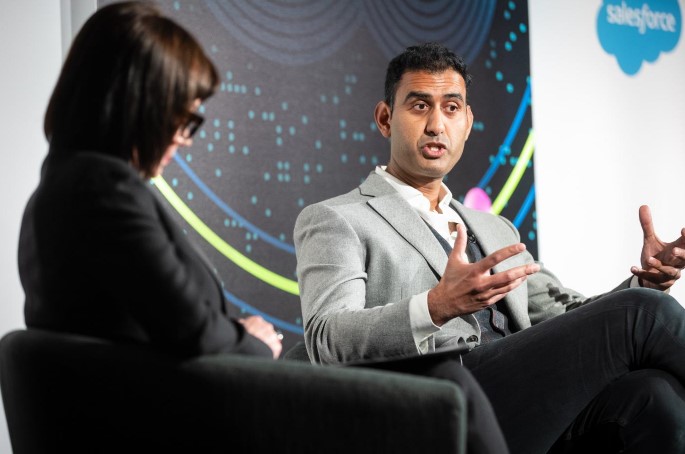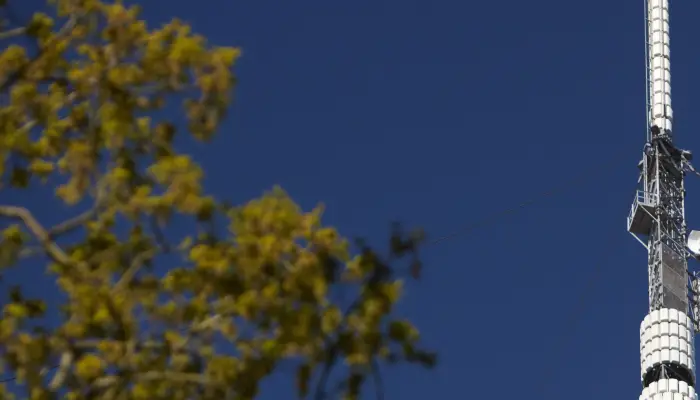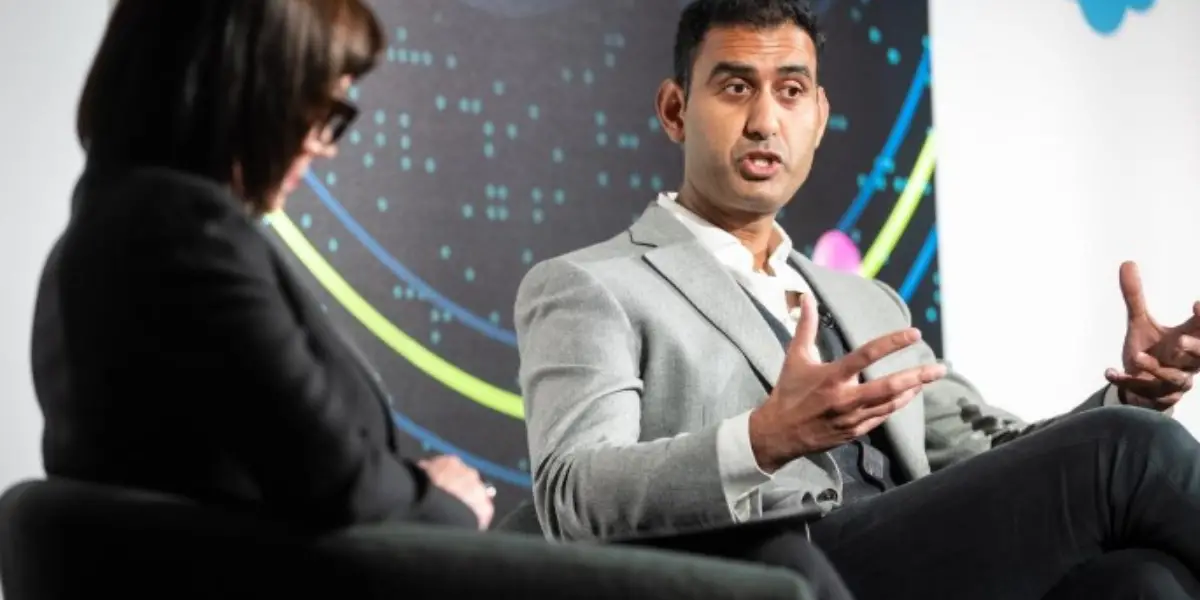Shuja Khan speech to Media and Telecoms 2023 & Beyond Conference
Transcript of speech delivered by Shuja Khan, CEO Arqiva, at the Deloitte Enders Analysis 'Media and Telecoms 2023 & Beyond' conference on 18 May 2023.
Arqiva does not create content. Instead, we provide the backbone of TV and radio in the UK. Through our digital terrestrial TV (DTT) transmission and satellite infrastructure, we deliver TV into four out of five households today. We use the same infrastructure to deliver radio, listened to by nine out of ten adults every week, and distribute TV channels to over 100 countries across the globe—and the latter also includes IP delivery. Separately, we are the pre-eminent provider of smart meter connectivity to the utility sector in the UK. However, our main job is to get content into your home, car and place of work; to deliver on the promise of universality day in and day out. There is no one size fits all approach to achieving that. We are not going through a simple transition from broadcast to digital—it is not like the transition from the horse and carriage to the automobile. TV and DAB radio broadcasting are already digital. In reality, we have an evolving mixture of ways people consume TV and radio and will do for a long time.
 To be clear, there is no doubt that streaming is growing. However, despite the substantial investment in the progress of IP content delivery, broadcast remains the dominant medium. For example, about 88% of viewing and listening to BBC services today is consumed via broadcast. Enders Analysis predicts that by 2034, in ten years from now, broadcast viewing will be around 20 billion hours, which is still roughly 80% of what it is today. To deliver on our promise of universality, it is helpful to consider three Rs: reach, reliability and resources.
To be clear, there is no doubt that streaming is growing. However, despite the substantial investment in the progress of IP content delivery, broadcast remains the dominant medium. For example, about 88% of viewing and listening to BBC services today is consumed via broadcast. Enders Analysis predicts that by 2034, in ten years from now, broadcast viewing will be around 20 billion hours, which is still roughly 80% of what it is today. To deliver on our promise of universality, it is helpful to consider three Rs: reach, reliability and resources.
Firstly, we need to make sure services reach everyone. Over 98% of the UK population can receive free-to-air TV. No other technology can match the reach of digital terrestrial television (DTT). To be clear, I am referring here to both geographic and social reach. In this room, most of us can afford streaming subscriptions and superfast broadband. However, just under one third of UK households earn less than £20,000 per year. For them, broadcast provides quality and choice for no extra cost compared to the annual cost of perhaps £700 for a high-quality broadband package. It was reported this morning that one million people cancelled their broadband last year because of the increased cost of living. Luckily, those one million people were still able to enjoy 100 TV channels via Freeview on DTT.
There is also the UK’s ageing population: 45% of our population is aged 45 years or over. This group grew up before the internet existed and they will be around for some time. For them, broadcast has long been part of their daily life and routines.
Finally, there is geographic reach: it is important to remember that most UK audiences live outside the metropolis, with 20% living in entirely rural areas. For these households in particular, access to fibre broadband can be a substantial challenge. A breadth of content delivered through a mix of media means that not only is there something for everyone, it also reflects the diversity of the country we live in.
Reach is underpinned by reliability. Broadcast consistently delivers 99.9% reliability, meaning people are receiving TV and radio uninterrupted nearly all of the time. Both TV and radio are trusted lifelines for millions of people. A few hours, let alone days, without either can have a hugely negative impact on mental health and engender a real feeling of disconnect. I saw first-hand the impact of this when services were disrupted in Yorkshire, during the autumn of 2021.
In truth, IP has a way to go before we get there, both in terms of reliability and quality. At Arqiva we use fibre to transport content to over a thousand transmission sites across the country. We ensure the high resilience of our services by having a diverse network of connectivity suppliers. I can tell you from experience that fibre cuts, outages and planned works are a regular occurrence. We would not rely on one option for our connectivity, so I am not sure why households should do the same. We see the value of bringing broadcast levels of reliability to IP. This is why we are investing in software technology that helps deliver IP streaming via smart connected delivery networks. This will ultimately raise the quality of IP streaming to the level of HD, which is especially important for live events. By giving consumers the option of delivery technology into their homes, we are improving certainty of service. Facing cyber threats and ever-increasing challenges, this improves national resilience across the country.
Lastly, the final R: the resources we use to deliver content. More content is being delivered over broadcast now than ever before with over 100 free-to-air broadcast TV channels, 500 digital radio stations, 300 analogue stations, all delivered through the same network. It is well known that by sharing the broadcast infrastructure and the resources used to maintain it across the UK, all consumers can access a wide choice of content at the lowest possible cost. Less well known is that this shared network is environmentally sustainable: Ofcom figures show that energy consumption per device hour for streaming on TV is six times higher than that for DTT. That is worth bearing in mind when we are looking to reduce our overall carbon footprint as a nation.
To conclude, we are all navigating a changing landscape. To keep public trust, some things cannot change. For Arqiva, that means universal reach, our commitment to reliability and our effective use of resources. We are preserving the public service ethos that makes British broadcasting unique, recommitting to the principle of universality, building national unity, protecting communications resilience, and crucially, keeping viewer and listener choice at the heart of it all.
News

Arqiva’s Net Zero targets validated by the Science Based Targets initiative

Jade Botterill MP Visits Emley Moor

Arqiva Wins Prestigious HR Excellence Award for Health & Wellbeing Strategy
